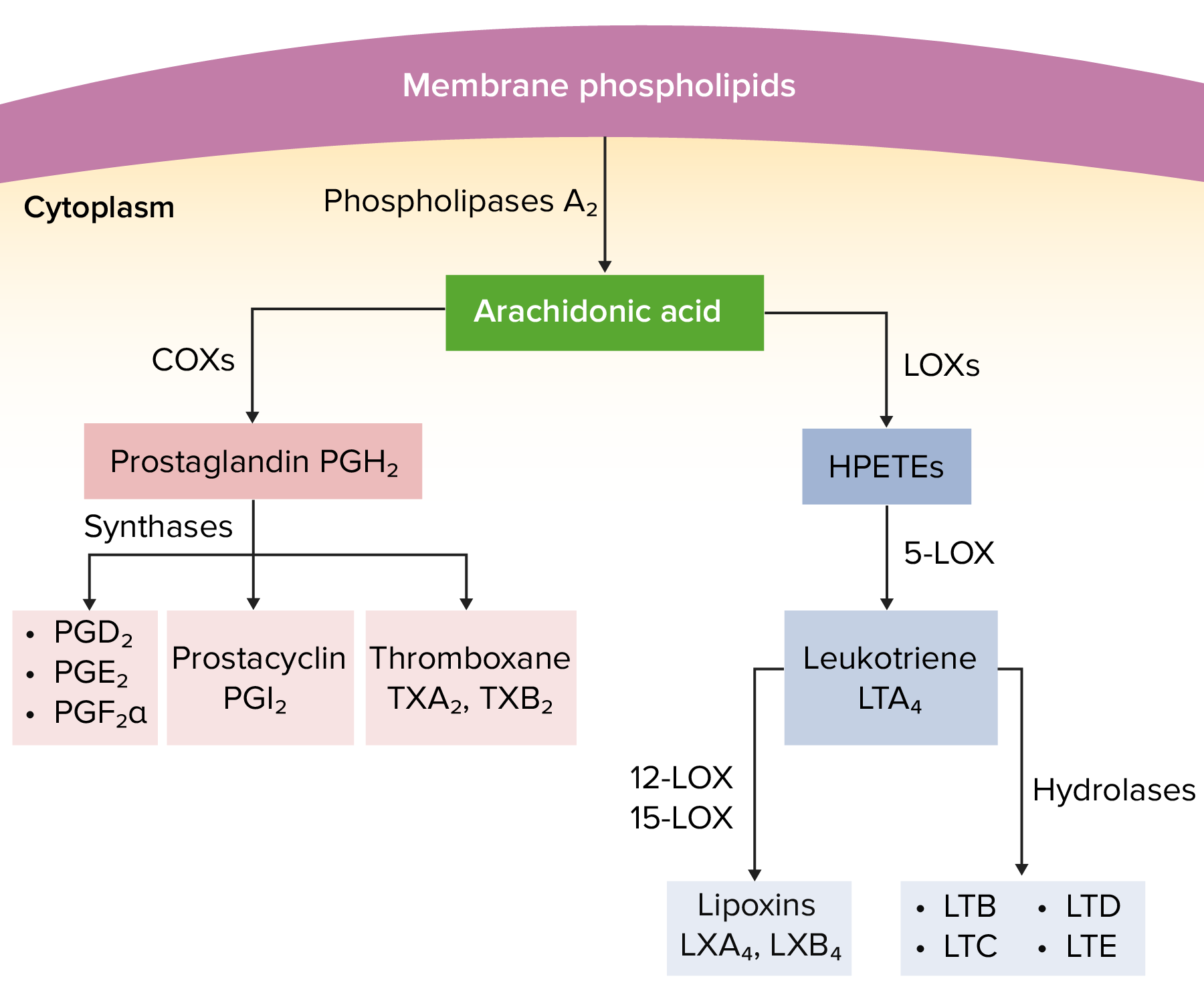Playlist
Show Playlist
Hide Playlist
Reye Syndrome
-
Slides GIP Reye Syndrome.pdf
-
Download Lecture Overview
00:01 Welcome! We're going to discuss an entity that is exceptionally rare, but has an interesting epidemiology and is something that we can prevent just by recognizing that it is a syndrome and it's a real thing. 00:13 This is Reye's syndrome. 00:16 So Reye's syndrome is a very rare pediatric disorder that's associated with non alcoholic fatty liver disease and a non inflammatory encephalopathy, where there's significant liver damage. 00:29 The epidemiology of this is kind of interesting. 00:32 It was first identified as an entity as a thing in 1963. 00:38 With a recognition of this syndrome, roughly 500 cases, up to 1979-1980 were identified annually in the United States. 00:48 However, once we could establish what were the risk factors for the syndrome, we've been able to almost eliminate it. 00:57 And it's exceptionally rare that we see it anymore less than two cases annually in the US, since 1994. 01:05 What's causing us? So it's a viral infection, and it can be any of a number of viruses, as we'll see in a subsequent slide, with mitochondrial dysfunction associated specifically with aspirin ingestion. 01:17 So previously, we would say, Oh, you have a viral infection, take some aspirin and some fluids and you'll be good to go in a couple of days, except that in the pediatric population, ages five to 14, there was an associated fulminant hepatic failure that lead to death. 01:35 So how does this happen? Any of a variety of viral infections can cause this influenza A and B are the most common, but it can be varicella. 01:46 I can be any of a viral, number of viral gastroenteritis causes, and it's going to happen in the pediatric population. 01:55 What happens is that the virus is altering some of the metabolism in the liver. 02:03 And then on top of that, we have salicylates. 02:07 Salicylate and particularly its metabolic products, including gentisic and hydroxy hippuric acid, are going to potentially impact normal mitochondrial function in particular, betaoxidation of fatty acids. 02:23 So in the setting of a virus plus aspirin, we get an abnormal hepatocyte metabolism, that mitochondrial injury will lead to inhibition to the enzymes required for fatty acid oxidation, you're not making enough ATP, the hepatocytes die, and now you have fulminant liver failure with Hyperammonemia, metabolic acidosis, hepatic steatosis. 02:49 And everything the liver is supposed to do, it's no longer doing. 02:53 How do these patients present? Well, it again, it's in the setting of a viral infection, and aspirin ingestion. 03:01 The symptoms appear within three to five days after that initial insult, combined insult. 03:07 And that's the period of time it takes to get the liver failure, the liver cells to die, and then a systemic manifestations. 03:14 So because of the profound Hyperammonemia, there is predominantly a CNS effect, because the liver is not metabolizing or otherwise removing things that are absorbed through the GI tract, and there will be impressive vomiting, lethargy, confusion, and this can progress to coma, seizures, and even death of the patient. 03:34 The laboratories are going to be an elevated AST and ALT. 03:38 Obviously, whenever you have hepatocyte damage, your transferases are going to be elevated. 03:43 Metabolic acidosis, because we're not metabolizing appropriately and there's a lot of necrosis so we'll see lactic acid and the associated acidosis. 03:52 Hyperammonemia is a very prominent feature of Reye's syndrome, and we will be able to measure elevated ammonia levels. 04:01 Hypoglycemia because liver is no longer able to either synthesize glucose or to store and then metabolize glycogen. 04:09 So hyperglycemia is a prominent feature. 04:11 CT and MRI are somewhat nonspecific, liver liver biopsy is probably going to be your gold standard in the appropriate setting. 04:19 Once you've identified this, what can you do? It's mainly supportive. 04:22 You hope that you have caught it at an early enough stage so that the liver doesn't continually fail or completely fail long term. 04:31 To manage the hypoglycemia, you could have dextrose glucose containing fluids. 04:36 For the Hyperammonemia, you use phenylacetate, sodium benzoate, which is actually thought to be a mechanism or a drug that will allow us to break down ammonia through other cycles. 04:50 To treat the coagulopathy, you give cryoprecipitate or fresh frozen plasma or vitamin K, so the patient doesn't bleed to death. 04:58 Even with full only supportive therapy up to 20% of patients will die. 05:03 However, with that therapy and early recognition in particular, the vast majority will survive. 05:11 With that, we have covered Reye's syndrome.
About the Lecture
The lecture Reye Syndrome by Richard Mitchell, MD, PhD is from the course Disorders of the Hepatobiliary System.
Included Quiz Questions
What causes Reye syndrome?
- Aspirin ingestion given during a viral infection
- Acetaminophen ingestion with a bacterial infection
- Bacterial infection and some antibiotics
- Parasitic infection and some antiparasitic drugs
- Acetaldehyde poisoning
Which infections are most strongly associated with Reye syndrome? Select all that apply.
- Influenza A
- Influenza B
- RSV
- HBV
- HIV
When do the symptoms of Reye syndrome present?
- 3–5 days after viral infection and aspirin therapy
- 7–14 days after viral infection and aspirin therapy
- 1–2 months after viral infection and aspirin therapy
- 6–12 months after viral infection and aspirin therapy
- 1 year after viral infection and aspirin therapy
Customer reviews
5,0 of 5 stars
| 5 Stars |
|
5 |
| 4 Stars |
|
0 |
| 3 Stars |
|
0 |
| 2 Stars |
|
0 |
| 1 Star |
|
0 |




